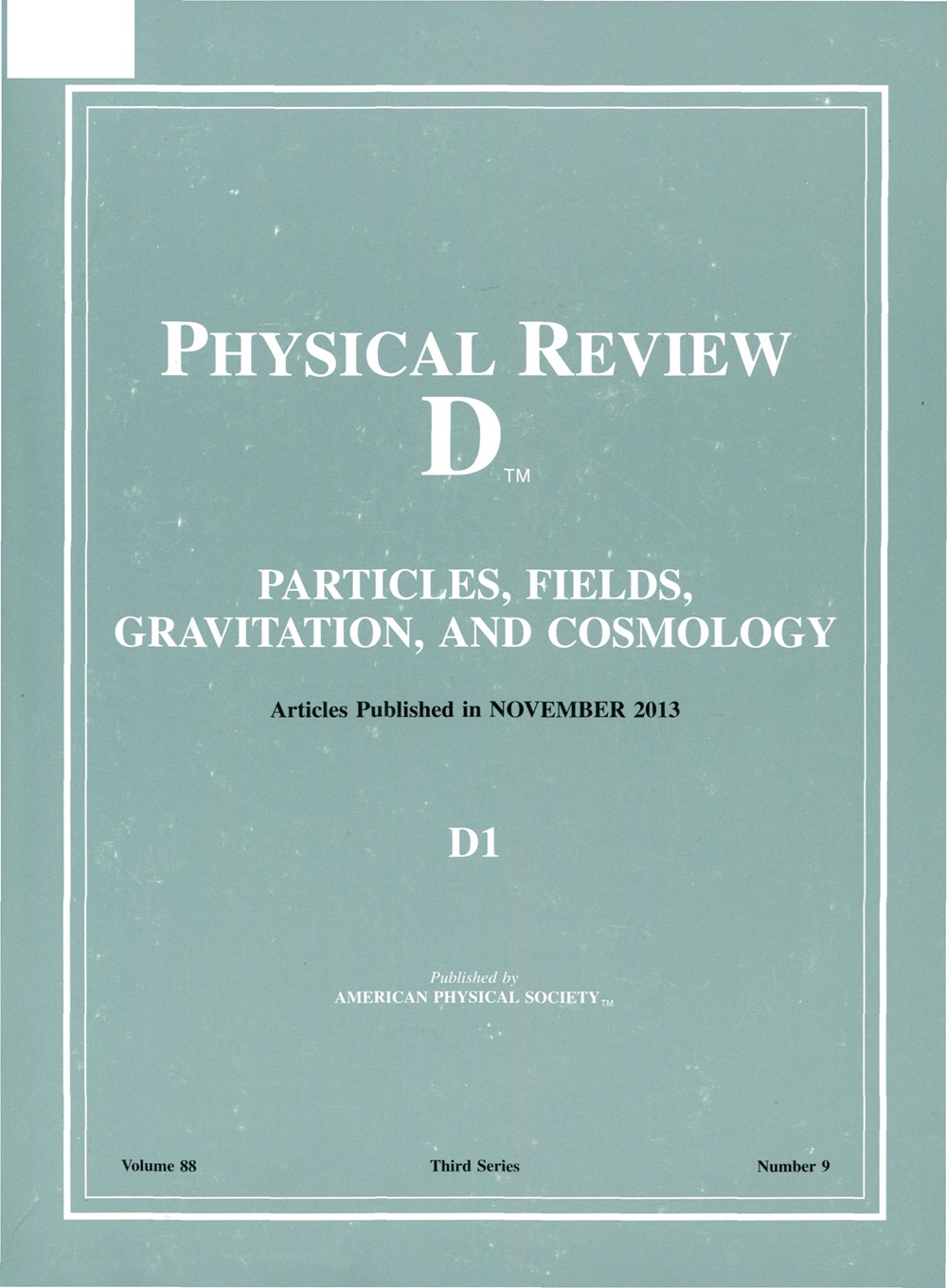在黑洞的深处
IF 5.3
2区 物理与天体物理
Q1 Physics and Astronomy
引用次数: 0
摘要
我们考虑了一个自由落体的Unruh-DeWitt探测器的跃迁速率,线性耦合在Hartle-Hawking-Israel状态下制备的无质量标量量子场,作为黑洞内部的探测器。具体来说,我们考虑了探测器在无自旋Bañados-Teitelboim-Zanelli (BTZ)黑洞中自由落向和跨越视界时的跃迁速率,并将其与RP2 geon的相应情况进行了比较。BTZ黑洞和geon黑洞都是AdS3时空的商,它们在视界的外部是相同的,但内部拓扑结构不同。我们发现视界外的速率在性质上是相似的,但在geon时空中的振幅大于BTZ情况。一旦探测器越过视界,响应率的时间导数就会出现明显的不连续性。如果探测器在足够早的时间(在过去的白洞视界内)开启,这些不连续可以出现在视界之外。一般来说,探测器可以作为一个“早期预警系统”,既能发现黑洞的视界,又能识别它的内部拓扑结构。2025年由美国物理学会出版本文章由计算机程序翻译,如有差异,请以英文原文为准。
Deep in the knotted black hole
We consider the transition rate of a freely falling Unruh-DeWitt detector, coupled linearly to a massless scalar quantum field prepared in the Hartle-Hawking-Israel state, as a probe of the interior of a black hole. Specifically, we consider the transition rate of a detector in the spinless Bañados-Teitelboim-Zanelli (BTZ) black hole as it freely falls toward and across the horizon and compare it to the corresponding situation for an RP2 geon. Both the BTZ black hole and its geon counterpart are quotients of AdS 3 Published by the American Physical Society 2025
求助全文
通过发布文献求助,成功后即可免费获取论文全文。
去求助
来源期刊

Physical Review D
物理-天文与天体物理
CiteScore
9.20
自引率
36.00%
发文量
0
审稿时长
2 months
期刊介绍:
Physical Review D (PRD) is a leading journal in elementary particle physics, field theory, gravitation, and cosmology and is one of the top-cited journals in high-energy physics.
PRD covers experimental and theoretical results in all aspects of particle physics, field theory, gravitation and cosmology, including:
Particle physics experiments,
Electroweak interactions,
Strong interactions,
Lattice field theories, lattice QCD,
Beyond the standard model physics,
Phenomenological aspects of field theory, general methods,
Gravity, cosmology, cosmic rays,
Astrophysics and astroparticle physics,
General relativity,
Formal aspects of field theory, field theory in curved space,
String theory, quantum gravity, gauge/gravity duality.
 求助内容:
求助内容: 应助结果提醒方式:
应助结果提醒方式:


